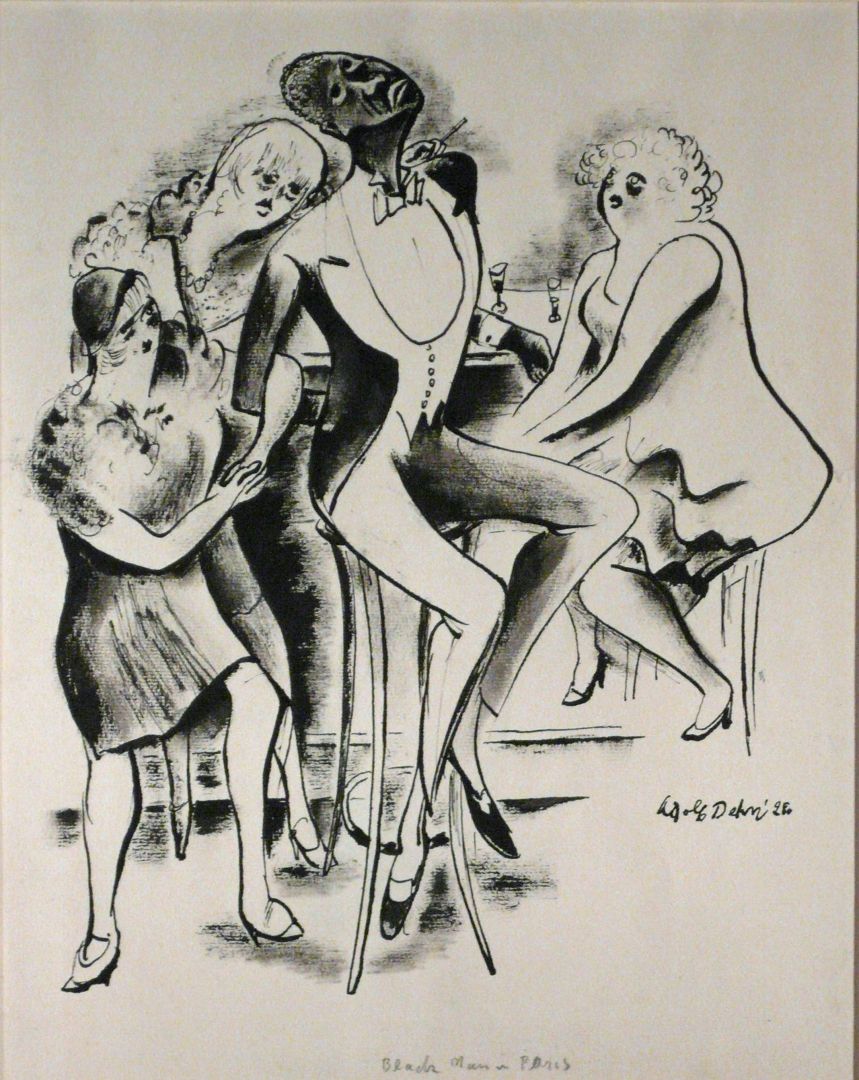Dehn, Adolf. BLACK MAN IN PARIS. Drawing, Ink on Paper, 1928. Signed and dated in ink within the image, right, and titled in pencil, lower center. 15 3/4 x 12 7/8 inches (sheet). Framed to 21 x 18 inches. Provenance, Doyle, NY, April 2016, Lot 92. In ex cellent it condition. The drawing is a study for Dehn's lithograph "Nostalgia," one of a series of more than 30 prints he made with the printer Desjobert in Paris which were published and exhibited by Weyhe in 1928. Dehn spent most of the 1920s in Europe, as did the African-American poet and novelist Claude McKay. While Dehn was in Paris in 1928, McKay spent the year primarily in Marseille, gathering material for what became his nove "Romance in Marseille." Considered transgressive at the time it was written, it remained unpublished during McKay's lifetime. It was published in 2020 by Penguin, A review in the October 8 issue of the NY Review of Books discusses McKay's time in Harlem, when he first came to live in New York as being "heady and fortuitous." "It was a period, recalled Langston Hughes, “'when the Negro was in vogue,'” and a number of competitors battled for the souls of black folk. They included wealthy, exotic-seeking white voyeurs and Afrophilic benefactors. The same interest and attraction obviously existed in Paris, as satirized in Dehn's drawing and print, and viewers of the PBS series Downton Abbey will recall similar scenes involving the gentry and an African-American musician in London during the same time period. Interestingly, Dehn and McKay were well acquainted, having worked together at Boadrman Robinson's magazine, The Liberator. In "Claude McKay, Rebel Sojourner in the Harlem Renaissance: A Biography" by Wayne F. Cooper, the author refers to references by McKay to "nocturnal wanderings" in New York with Dehn, and Dehn later spoke of one such walk during which McKay made sexual advances to him, which he rejected, and which apparently cooled their friendship. ,
Follow us
Contact Us
ed@edpollackfinearts.com
Copyright © 2025 - Edward T. Pollack Fine Arts





